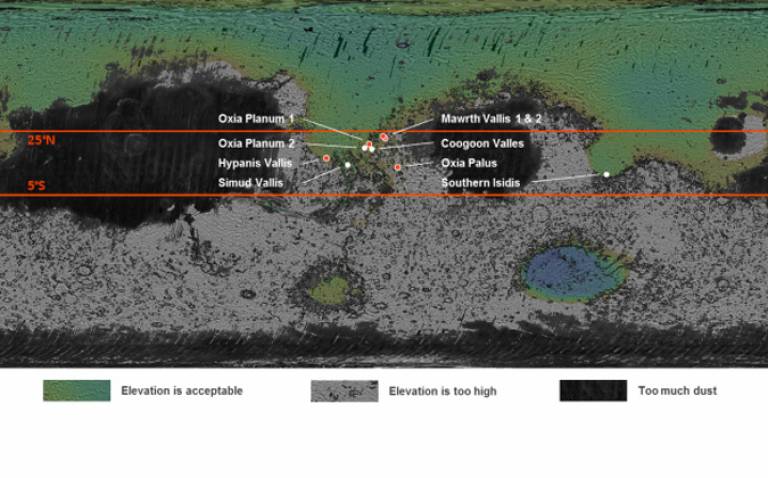ExoMars landing sites narrowed down – and PanCam appears on BBC News
3 April 2014
PanCam includes a pair of wide angle cameras (WACs) for stereo imaging and a High Resolution Camera (HRC) for zoom capability. PanCam provides geological and atmospheric context for the mission.

The first landing site selection workshop for the Esa-Roscosmos ExoMars rover was held on 26-28 March at ESAC near Madrid. Prof Andrew Coates of the Planetary Science Group attended the meeting, as Principal Investigator of the PanCam instrument on the rover. MSSL leads the international PanCam team which includes hardware from Germany and Switzerland, with important contributions from Austria, as well as the UK. PanCam includes a pair of wide angle cameras (WACs) for stereo imaging and a High Resolution Camera (HRC) for zoom capability. PanCam provides geological and atmospheric context for the mission.
The selection of the final landing site is a tricky combination of engineering constraints and scientific interest. The heat resistant tiles and parachutes of the landing system need enough time to operate in the thin Martian atmosphere before a safe landing of the 300kg rover, so the landing has to be below a certain level. Also the rover is solar powered, so the landing needs to be near the equator. On the other hand, signs of past water, either clays – phyllosilicates – seen form orbit, or physical features like rivers and deltas, are good from the science point of view. The overall goal of the ExoMars mission is to search for signs of life 3.6 billion years ago – and, for the first time, the mission will drill up to 2m under the harsh Martian surface environment to do this.
Prof Coates says ‘We had a vote on Thursday evening to narrow the site selection from 8 to 4. It was very exciting to have a say in this, as well as providing the PanCam perspective for the whole meeting, just before the vote’. The chosen sites, Mawrth Vallis, Oxia Planum, Hypanis Vallis and Oxia Palus, provide some excellent scientific targets. Peter Muller and colleagues from the MSSL Imaging group also attended the meeting.Meanwhile in the UK Airbus Defence & Space were opening their new ‘Mars Yard’ for rover testing in Stevenage, and this was featured, with a sequence shot at MSSL of a PanCam model and Prof Coates explaining the science of the mission, on BBC News Online, BBC 1 Breakfast, BBC 1 O’clock News and BBC World.
 Close
Close

